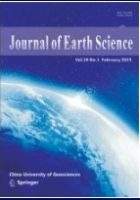“Articulated natural assemblages contain direct evidence of the element numbers, morphologies, positions and structures for reconstructing the feeding apparatuses of conodont animals, but these kind of materials are very rare in fossil records. Here we report ten new conodont natural assemblages from Member II of the Guanling Formation in Luoping County, eastern Yunnan Province, southwestern China. These assemblages were obtained from the fossil-bearing layers of the Luoping Biota, dated to the early Middle Triassic Anisian stage (Pelsonian substage). These fossiliferous laminated limestones mainly consist of calcites and dolomites, with platy clay minerals and pyrites as subordinate components, indicating that the conodont assemblages were preserved in a lower energy and anoxic sedimentary environment. The new natural assemblages preserve the primary collapse orientations of the Nicoraella feeding apparatus from the Luoping Biota, showing the relative original positions of the S, M and P elements, that could be further used to refine the architecture of this apparatus in space variable M elements and the position unclear P1 elements. Integrating previously reported three-dimensional and bilaterally symmetrical fused clusters, we statistically analyze the size of the positional homogenous elements within different sized materials, in particular S4, S3, or S2 elements, indicates that elements ontogenic changes do not affect the apparatus architecture. Architecture of Nicoraella apparatus remains stable in the process of ontogeny, so our reconstructed model is credible. It is the first time that ample types of materials have been used to restore a conodont apparatus within one genus, namely natural assemblages (articulated and disarticulated), fused clusters (articulated, disarticulated, compressed, and relatively three-dimensional), and abundant discrete elements, respectively. These materials together record the most complete information on architecture in the gondolelloid apparatuses, thus enabling us to reconstruct a reliable fifteen-element apparatus and propose it as a standard template for gondolelloid apparatus reconstruction.” Read more

